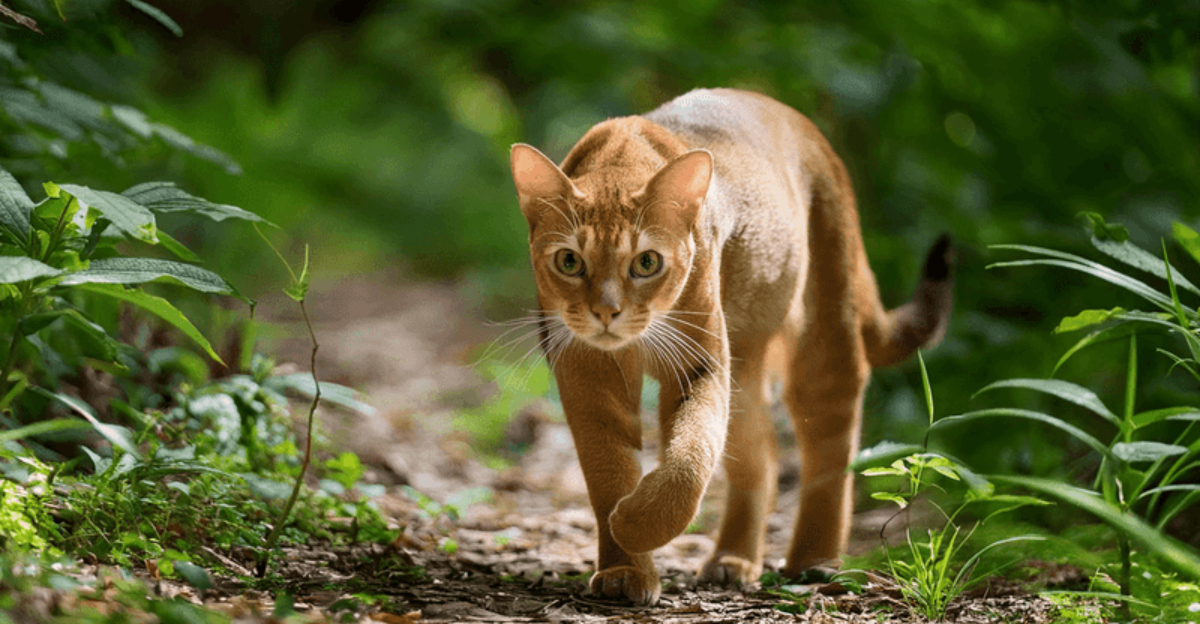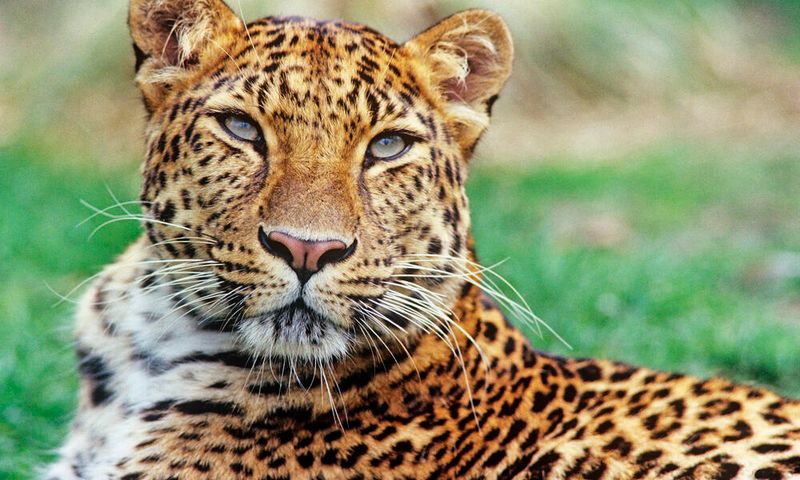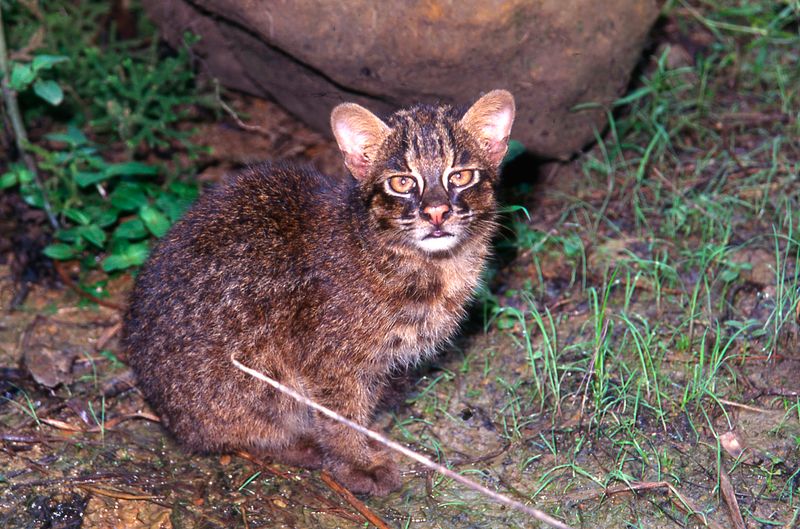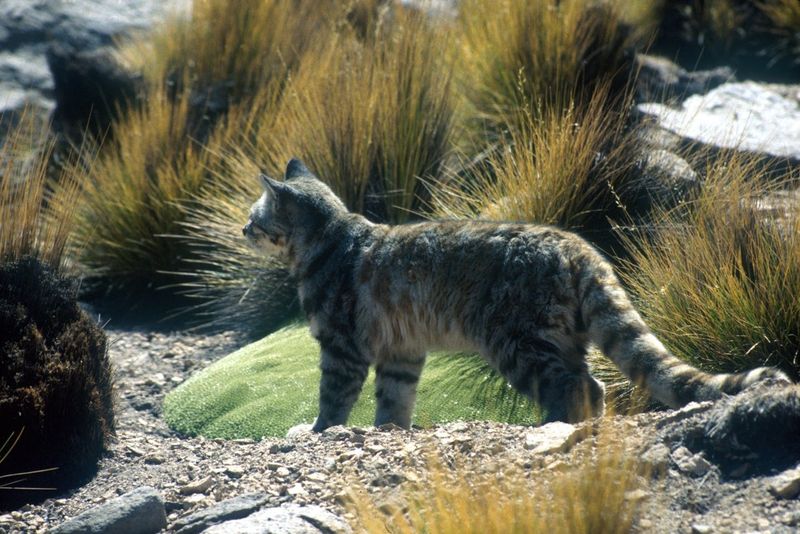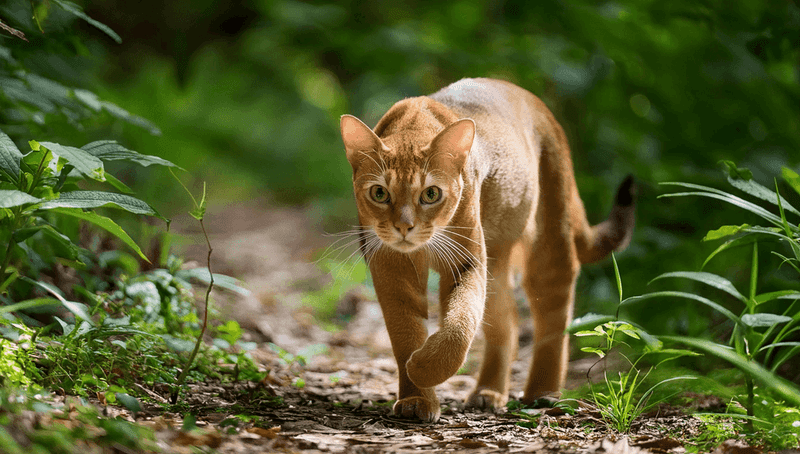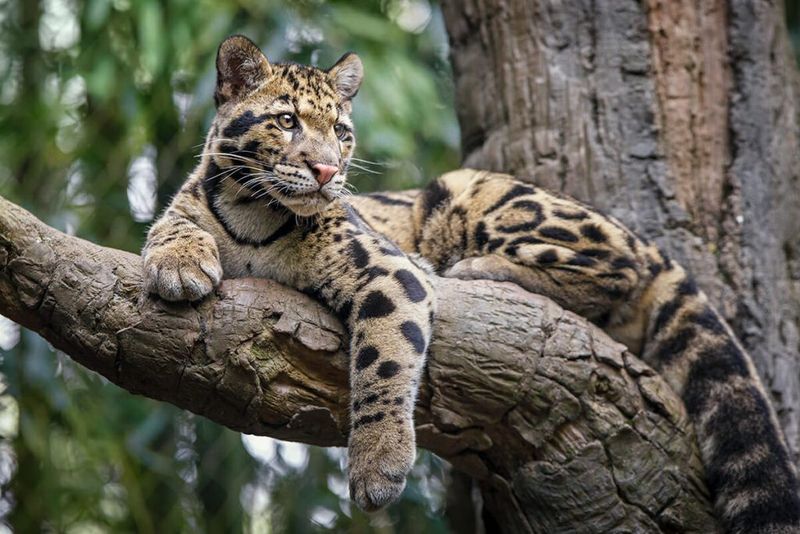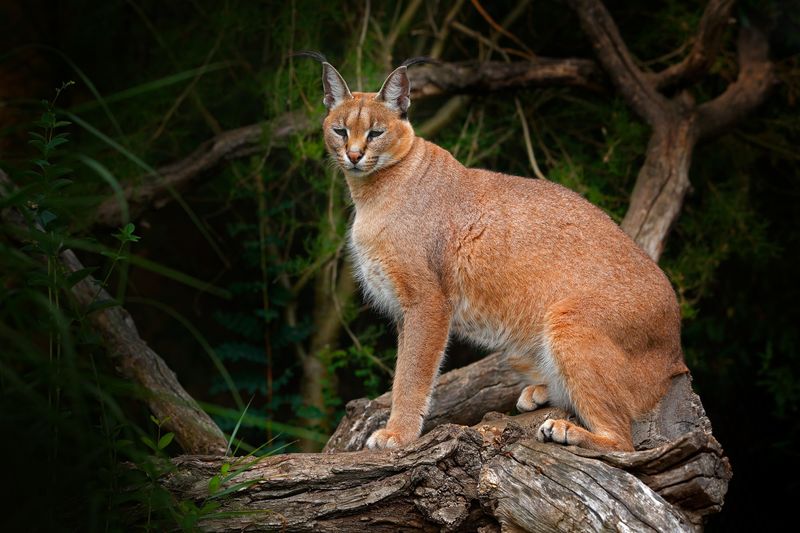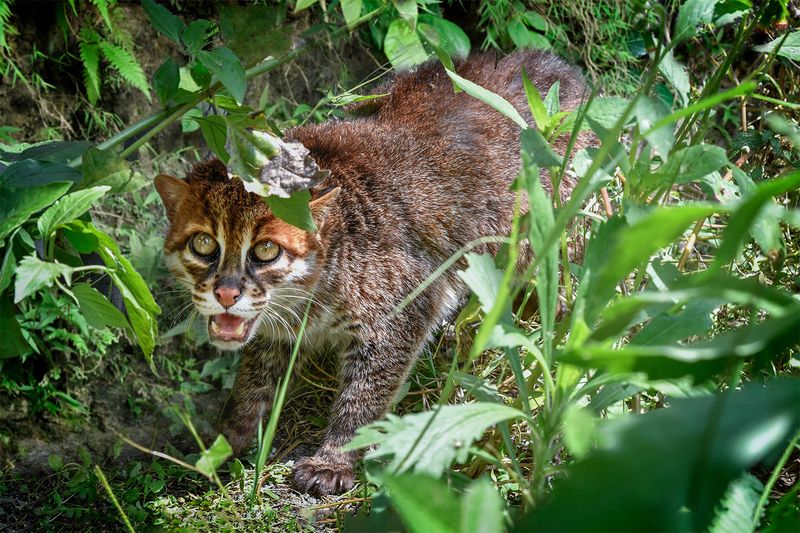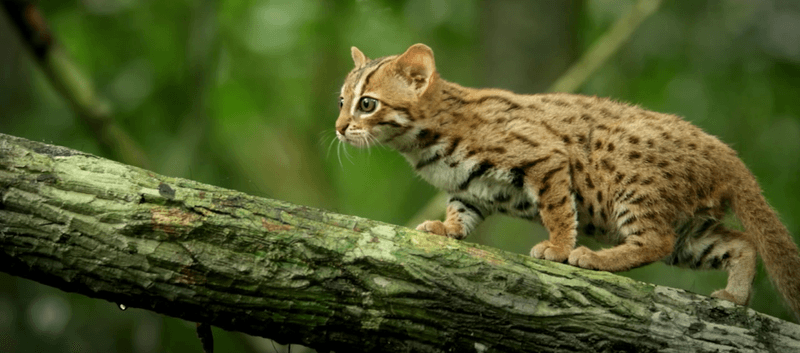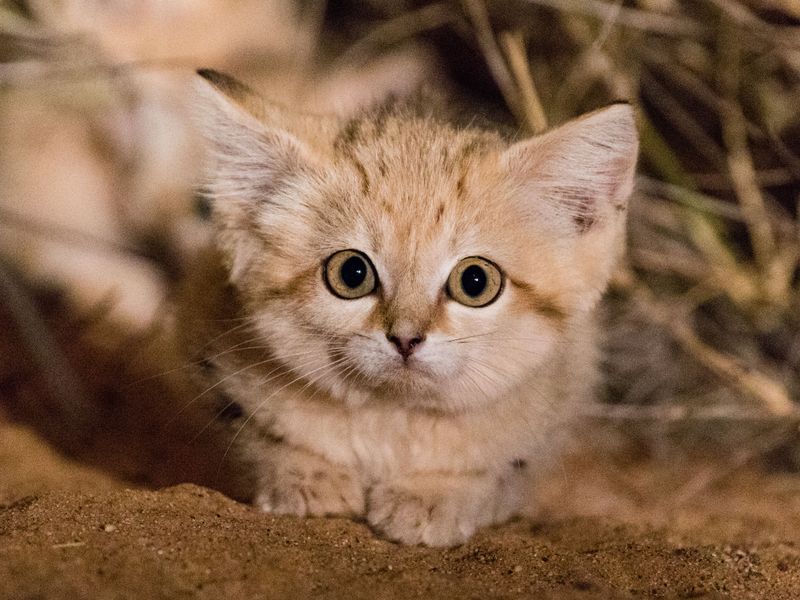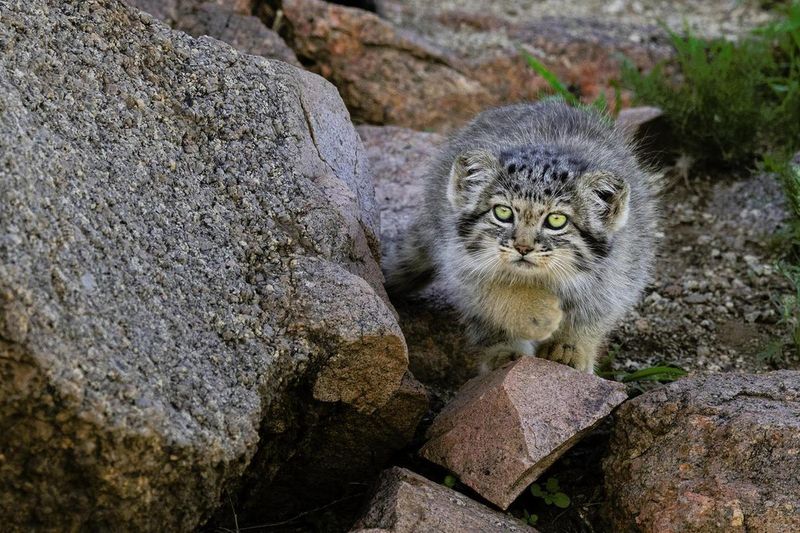📖 Table of Content:
The world is home to several rare and elusive wild cats, each exhibiting unique characteristics that set them apart. These fascinating creatures not only captivate due to their appearance but also play crucial ecological roles. From the dense forests of Borneo to the high Andes, these cats face threats such as habitat loss, poaching, and human conflict. Conservation efforts are imperative to preserve these magnificent felines. Here, we explore ten of the world’s rarest wild cats and their distinctive traits that highlight their importance in nature’s tapestry.
1. Amur Leopard
Known for its ghostly presence in the Russian Far East, the Amur leopard defies the odds with its survival. Its pale coat, adorned with dark rosettes, allows it to blend seamlessly into the snowy landscape. Solitary and primarily nocturnal, this feline is an expert tree climber. Despite its prowess, only around 100 individuals remain, making it critically endangered. Conservationists are ardently working to protect its dwindling habitat. With such rarity, the Amur leopard serves as a symbol of hope and determination in wildlife conservation efforts.
2. Iriomote Cat
In the dense subtropical forests of Iriomote Island, Japan, resides the intriguing Iriomote cat. This feline is uniquely adapted to its aquatic environment, often seen swimming to catch fish or crustaceans. With its muscular build and short, thick tail, it’s a master of stealth. Sadly, fewer than 250 of these cats exist today. Efforts to protect their island habitat are crucial for their survival. This cat not only enriches the biodiversity of Iriomote but also highlights the delicate balance of unique island ecosystems.
3. Andean Mountain Cat
Perched atop the high Andes, the Andean mountain cat is an enigma shrouded in mystery. Its dense, grayish coat, patterned with black spots and stripes, provides perfect camouflage among rocky outcrops. This feline stealthily hunts small mammals like chinchillas, thriving in a harsh environment. With fewer than 2,500 individuals left, conservationists focus on habitat preservation. The Andean cat’s elusive nature and adaptability make it a fascinating subject for researchers and conservationists alike, symbolizing resilience against environmental challenges.
4. Bay Cat
Hidden within the lush forests of Borneo, the bay cat’s vibrant chestnut coat gleams in the dappled sunlight. Solitary and notoriously elusive, this cat is a master of its shadowy domain. Its pale underbelly and distinctive tail markings make it a unique sight, though rarely seen. With an estimated population under 2,500, it faces threats from habitat destruction. The bay cat’s mysterious existence sparks curiosity and concern, driving conservationists to ensure its forest home remains intact. It embodies the island’s vanishing wilderness.
5. Sunda Clouded Leopard
Graceful yet elusive, the Sunda clouded leopard navigates the rainforests of Borneo and Sumatra with sublime agility. Its mesmerizing cloud-like coat patterns and bushy tail assist in balancing on tree branches. This medium-sized predator is facing a vulnerable future due to deforestation. Conservation initiatives aim to curb habitat loss and ensure its survival. Its ability to merge with the environment and its role in the food chain highlight the importance of preserving rainforest ecosystems. The Sunda clouded leopard is an icon of forest conservation efforts.
6. African Golden Cat
The African Golden Cat, often referred to as the ghost of the forest, is a master of stealth and secrecy. This elusive feline is primarily found in the rainforests of West and Central Africa. Its golden-brown fur provides excellent camouflage in the dense undergrowth, making it a formidable predator.
Despite its size, similar to that of a domestic cat, the African Golden Cat is a solitary and secretive creature, rarely seen by humans. It is a testament to the mysteries still hiding in Earth’s forests. While it hunts a variety of prey, from rodents to small antelopes, its elusive nature makes it difficult to study.
A fun fact: The African Golden Cat is one of the few wild cats that seem to shy away from humans, preferring the dense cover of the rainforest to the hustle and bustle of human activity.
7. Flat-headed Cat
In the peat swamps of Southeast Asia, the flat-headed cat prowls with a unique silhouette. Its elongated body and flat head make it a specialized hunter of aquatic prey, often seen fishing. This secretive feline’s habitat is threatened by agricultural expansion and pollution. Conservationists are working to protect these swampy environments to ensure the cat’s survival. The flat-headed cat is a reminder of the diverse niches occupied by wild cats and the intricate ecosystems that support their existence.
8. Rusty-spotted Cat
The rusty-spotted cat, the world’s smallest wild feline, weaves through the forests of India with unmatched agility. Its petite stature, combined with a spotted coat, allows it to navigate the underbrush stealthily. Known for its curious nature, this cat adapts well to various forest environments, although habitat loss poses a risk to its survival. Conservation efforts are focusing on preserving the diverse Indian forests that harbor this tiny predator. The rusty-spotted cat showcases the incredible adaptability and diversity of wild cat species.
9. Sand Cat
Amidst the arid expanse of the Sahara, the sand cat thrives where few others dare. Its sandy fur and large ears are perfectly adapted to desert life, allowing it to detect even the faintest sounds of prey. This nocturnal hunter is a symbol of survival in extreme conditions. However, the harsh environment, coupled with human encroachment, threatens its existence. Conservationists battle to maintain its habitat. The sand cat embodies resilience and adaptability, highlighting the delicate balance of desert ecosystems.
10. Pallas’s Cat
Inhabiting the windswept steppes of Central Asia, Pallas’s cat is a master of disguise with its fluffy fur and distinct squarish face. This solitary feline is elusive, often making its home in rock crevices. Its appearance is well-suited to the cold, open landscapes it inhabits. Conservationists are concerned about habitat degradation and hunting pressures. Pallas’s cat stands as a symbol of the unique adaptations required to survive in one of the world’s harshest environments. It invites admiration for its tenacity and charm.
